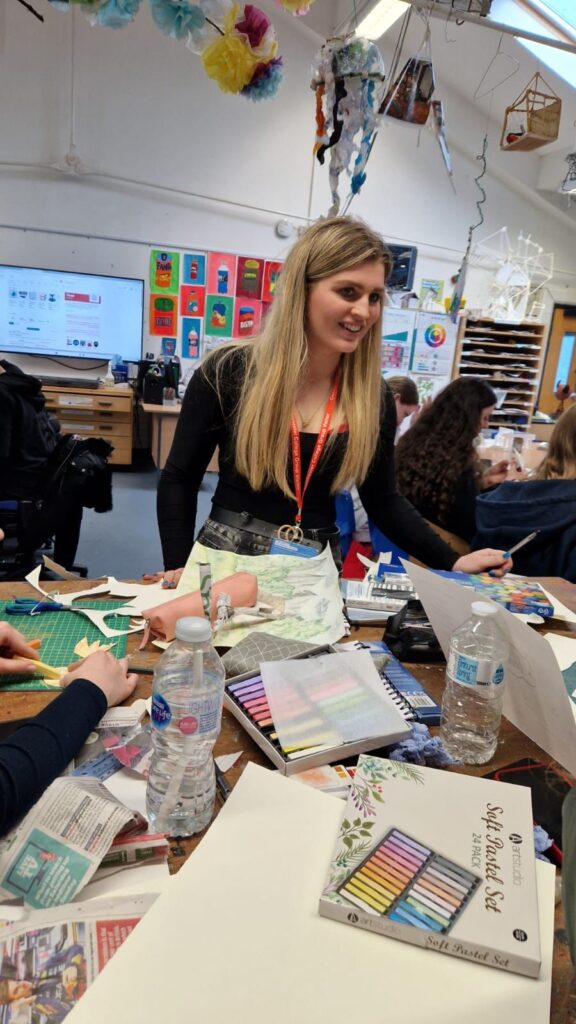12th March: 1:1 Help with Students
During the absence of the class teacher, the students were scheduled for 1:1 consultation to help guide their design projects. With the teacher away and a substitute in the classroom, I took it upon myself to circulate and offer advice on their work. I aimed to help steer their designs in the right direction by providing precedent ideas that could further develop their individual research. This approach allowed them to expand their thinking about the various possibilities they could explore. The brief’s theme is the ever-changing world, which presents many different avenues for the students to investigate. I also asked them to consider their target audience, prompting them to reflect on their goals and intentions behind their designs.
Student 1:
– This student needed assistance in exploring the brief, having missed the abstract model lesson. I went over the task with them and demonstrated how they could delve deeper into their ideas.
– I advised them to narrow their focus to one specific theme.
Student 2:
– This student was uncertain about which theme to pursue and what steps to take next. – To help clarify their direction, I suggested creating bubble diagrams to identify the target audiences for each theme and what they could create from them.
– They decided to focus on incorporating nature into a building to make it more environmentally friendly. I recommended they investigate biophilic design.
– They also expressed interest in addressing poverty on a global scale. I advised them to research statistics and the underlying reasons for poverty around the world.
Student 3:
– This student was investigating pandemics, particularly COVID-19, and its impact on the world.
– They wanted to design an office space that incorporates nature, aimed at improving mental health in the event of another pandemic.
– I suggested exploring biophilic design to see how nature can be integrated into buildings.
– To support their research, I recommended looking into mental health statistics comparing individuals working in urban areas with limited access to greenery versus those who have such access.
Student 4:
– This student chose the theme of interaction with animals, particularly considering the increasing risk of animal extinction.
– I encouraged them to think about which specific animal they would like to study and what type of habitat they would focus on.
– I also prompted them to consider their project’s aim: whether it is to care for the animals, reintroduce them into the wild, raise public awareness, or a combination of these objectives.
Student 5:
– This student envisioned creating a self-sufficient city on the sea.
– They explored the need to adapt to the changing environment due to global warming and considered factors like sunlight and water.
Student 6:
– This student also proposed a city on the sea, aimed at raising awareness and saving coral reefs.
– I advised them on the necessary steps to protect a coral reef, such as what is needed and what should be avoided.
– We discussed whether the city would be stationary or mobile, and the potential impact of reduced sunlight on the coral reef below.
Student 7:
– This student focused on refugee housing, specifically in Ukraine.
– I asked questions to help them refine their project: Is there a specific gender they are targeting? What cultural considerations should they include? What areas need to be represented in the building? I suggested looking at Hope Street as a precedent.
Fine Art
A staff member from another classroom overheard my advice and requested that I assist one of their students in Fine Art, who was designing a product for the elderly.
– The current idea was to create a tablet that controls all lights from one device. – I raised questions for consideration: What is the appropriate weight and size for the device so that an elderly person can hold it? What functions should the tablet have? Could it be designed to be worn around the neck for easier access?
– I recommended that the student engage with their own grandfather as a client to gather insights on what would be beneficial and what challenges he faces. Overall, the lesson was a success, and I was able to help many students by asking them specific questions that encouraged them to think deeply about their target audience and objectives for their designs.
